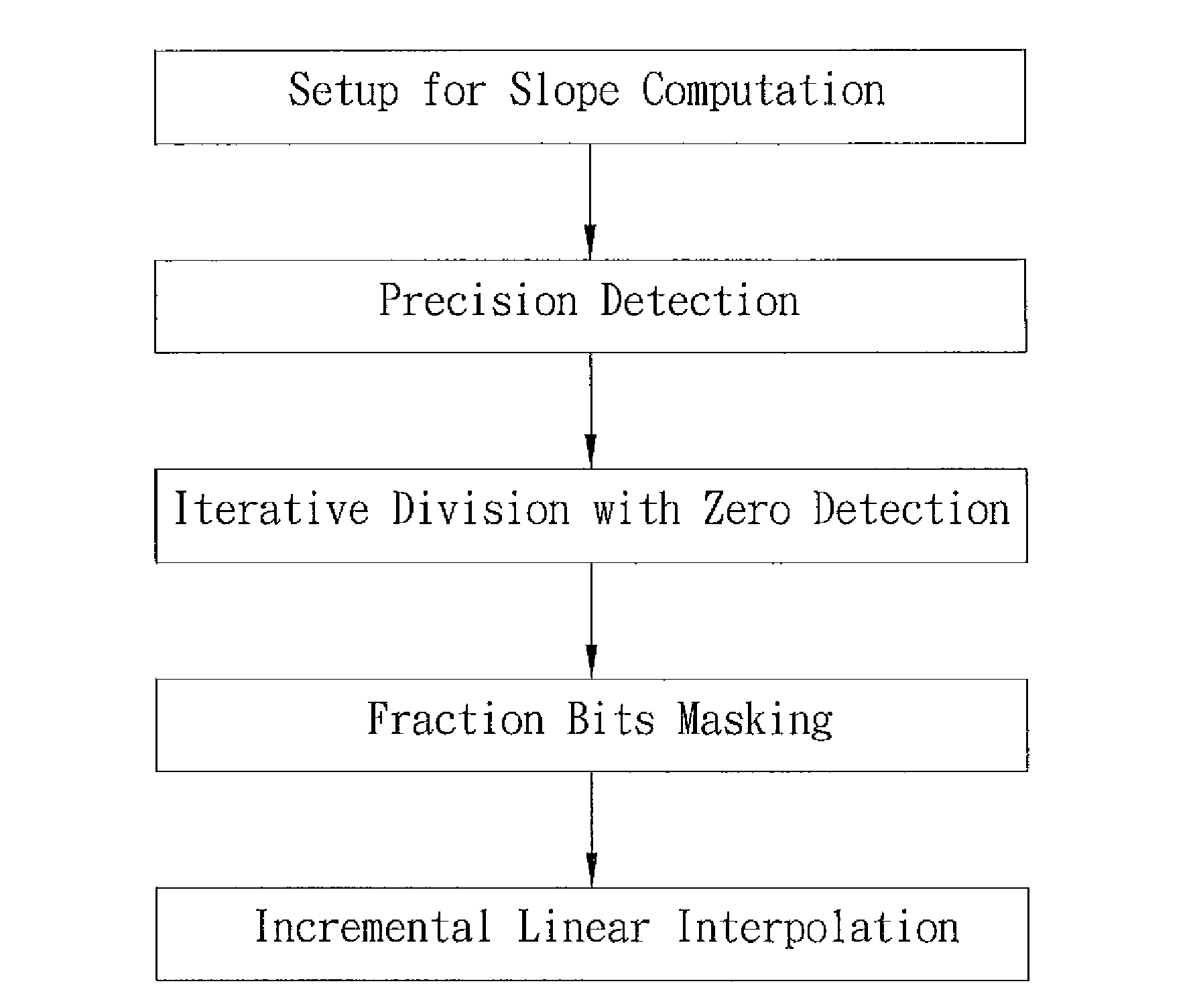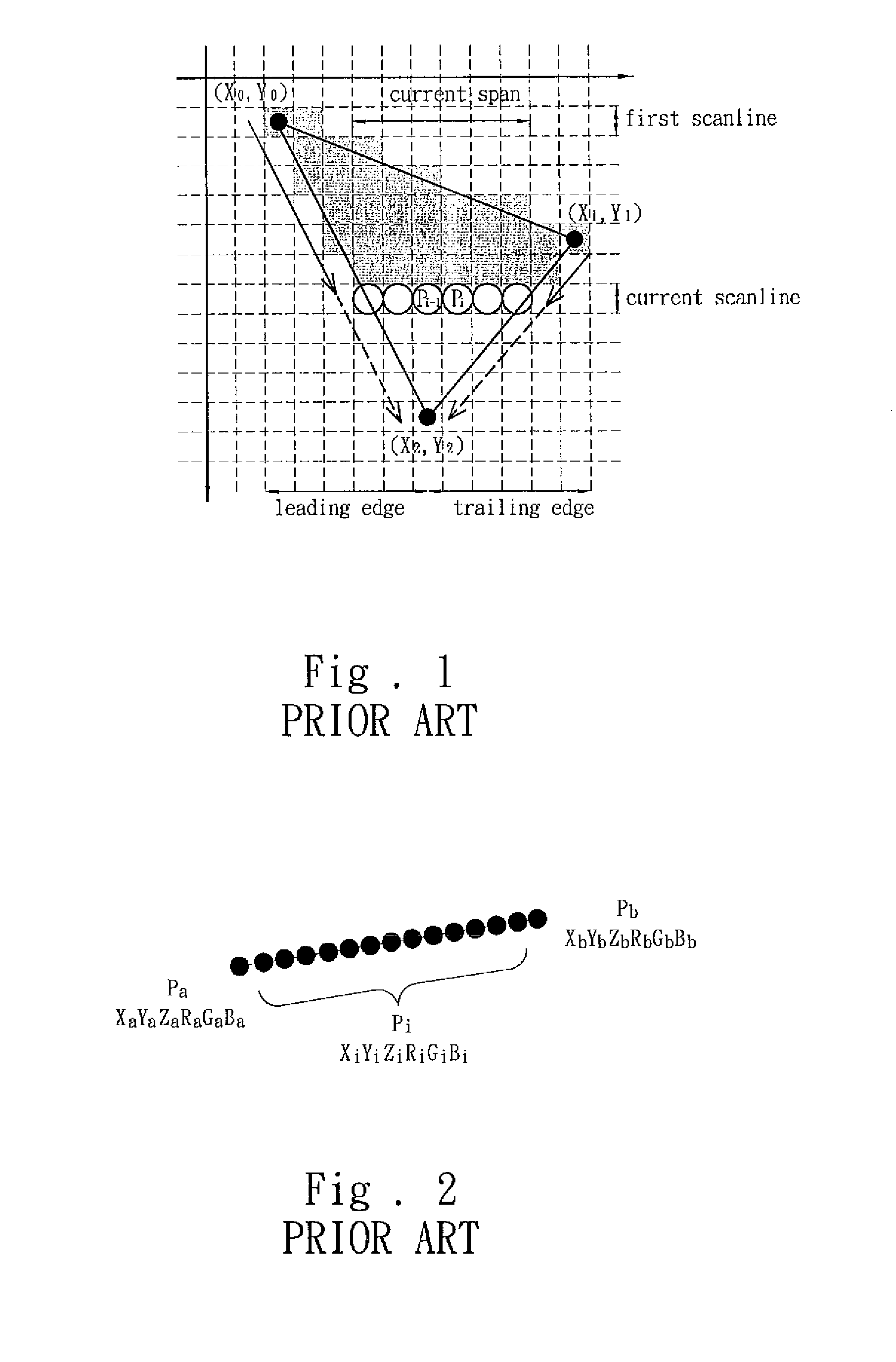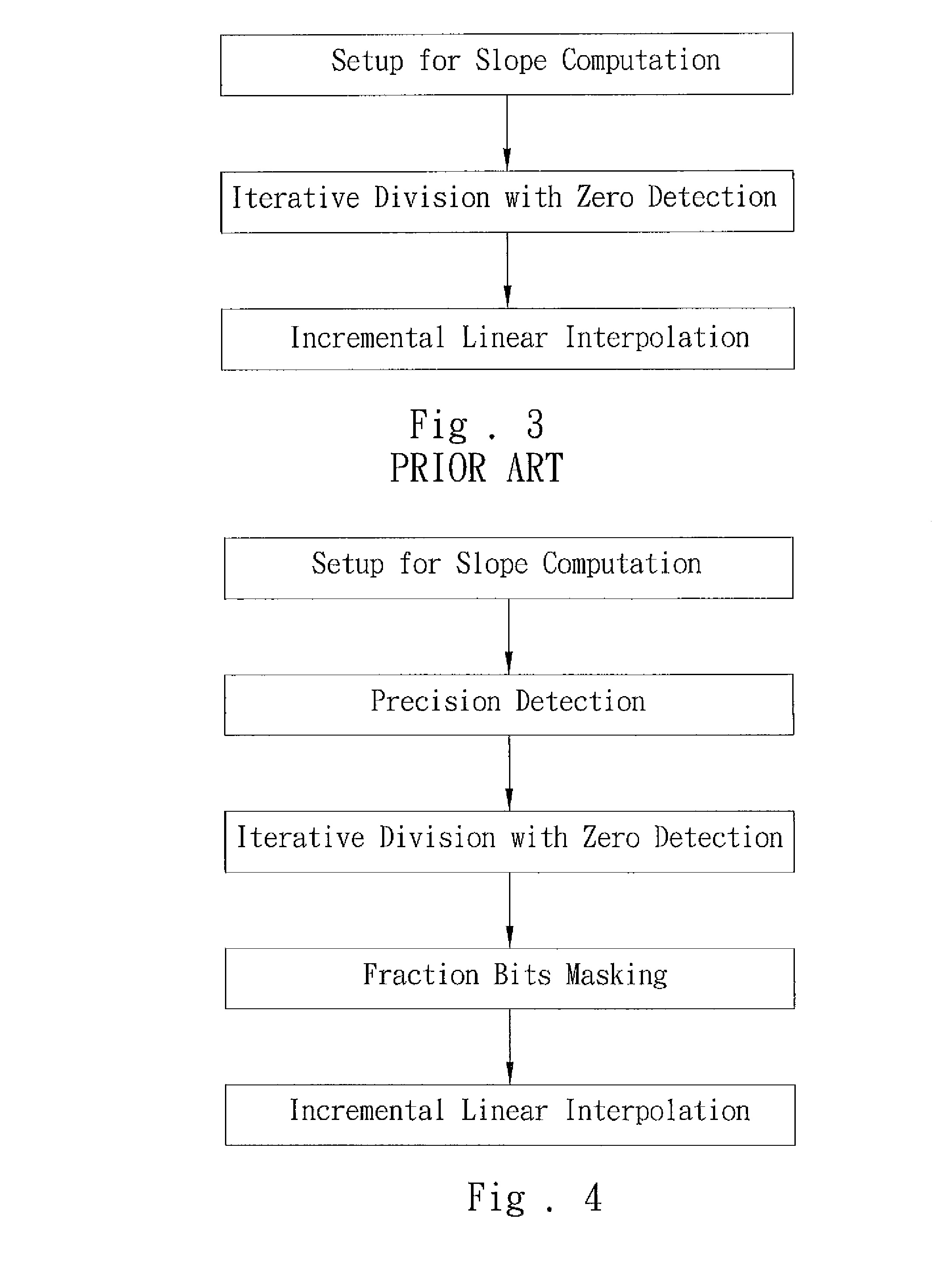Precision-sensing linear interpolation algorithm
- Summary
- Abstract
- Description
- Claims
- Application Information
AI Technical Summary
Benefits of technology
Problems solved by technology
Method used
Image
Examples
Embodiment Construction
[0018]Below, the technical contents of the present invention are described in detail with the embodiments. However, it should be noted that the embodiments are only to exemplify the present invention but not to limit the scope of the present invention.
[0019]Refer to FIG. 4 a flowchart of the precision-sensing linear interpolation algorithm according to the present invention. The precision-sensing linear interpolation algorithm of the present invention comprises: (a) a slope computation setup is performed to obtain a difference term; (b) a precision detection is performed to set the iteration number of iterative division calculations via calculating the difference between the theoretical quotient and the practical quotient, wherein the difference is used as a greater allowed tolerance of the system to reduce the iteration number of division calculations; (c) iterative division calculations is performed to obtain the slopes; (d) the bits unnecessary for the required precision are remo...
PUM
 Login to View More
Login to View More Abstract
Description
Claims
Application Information
 Login to View More
Login to View More - R&D
- Intellectual Property
- Life Sciences
- Materials
- Tech Scout
- Unparalleled Data Quality
- Higher Quality Content
- 60% Fewer Hallucinations
Browse by: Latest US Patents, China's latest patents, Technical Efficacy Thesaurus, Application Domain, Technology Topic, Popular Technical Reports.
© 2025 PatSnap. All rights reserved.Legal|Privacy policy|Modern Slavery Act Transparency Statement|Sitemap|About US| Contact US: help@patsnap.com



